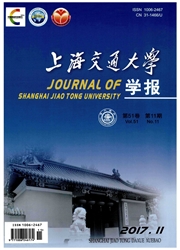

 中文摘要:
中文摘要:
基于Biot动力方程,利用COMSOL多物理场有限元计算软件构建了波浪-海床-管线动力响应的计算模型,模拟了一阶斯托克斯波作用下管线周围土体孔压和有效应力分布情况,对海床土体的液化情况进行判断,研究了波浪诱发海床液化及管线失稳的机理.研究过程中采用Partly dynamic动力方程(u-p模式).在Partly dynamic模型中,将海床视为多孔弹性介质,并且将孔压和位移视为场变量,考虑土体位移加速度,忽略孔隙流体惯性项的作用.模型得到验证后的参数研究表明:土体渗透系数、饱和度以及管线埋深、波高等参数对海床的孔压和有效应力影响显著.
 英文摘要:
英文摘要:
In this paper, based on Biot's theory, a numerical model for wave-seabed-pipeline dynamic response was established to investigate seabed instability failure. The seabed was treated as porous medium. The model simulated the distribution of pore pressure and effective stress, and the process of liquefaction around buried pipeline under various wave loads were investigated. Partly dynamic (u-p) formulations for the wave-induced response of the seabed with pipeline were adopted. In partly dynamic analysis, the u-p formulation in which both displacement and pore pressure were field variables was adopted considering the acceleration of soil skeleton while neglecting the inertial terms associated with pore water. Using COMSOL Multiphysics, a parametric study, including the permeability, degree of saturation, buried depth and wave height was conducted to investigate the seabed response. Then, a criterion for liquefied state was used and the possibility of wave-induced liquefaction occurring in porous seabed was studied.
 同期刊论文项目
同期刊论文项目
 同项目期刊论文
同项目期刊论文
 期刊信息
期刊信息
